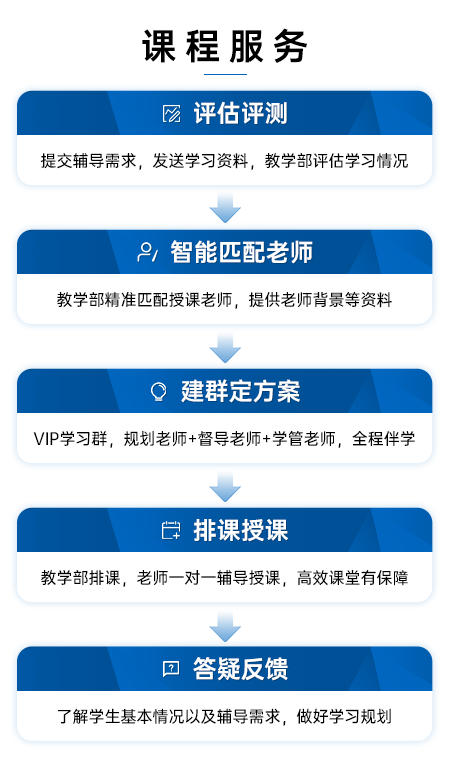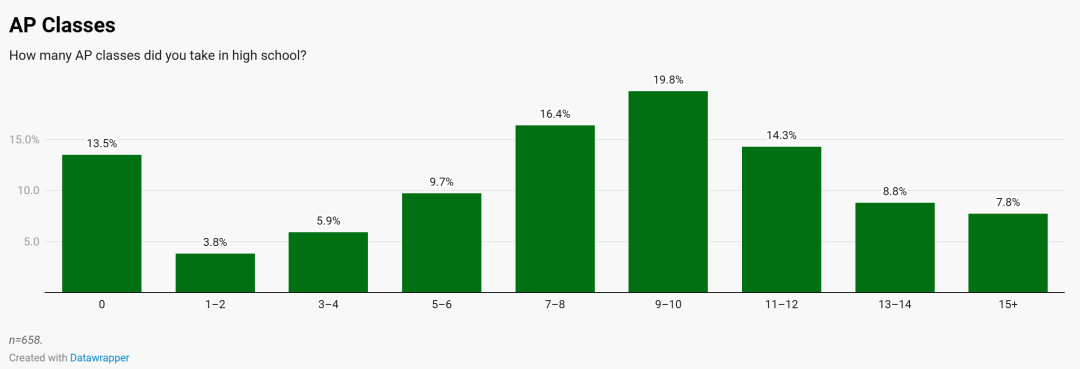全美艺术与写作大赛 The Scholastic Art & Writing Awards是北美最负盛名的创意写作大赛。该赛事由青年艺术家和作家联盟于1923年设立,每年与美国100多个视觉艺术和文学艺术组织合作,旨在发现最有创意与灵感的青少年美术与文学作品。
优秀获奖者不仅可以参加全美巡回展览,更有机会获得现金奖励和高达10,000美金的奖学金。很多金奖得主在后来成为了世界级艺术家和作家,其中包括世界最著名悬疑小说家史蒂文·金,以及当代最具影响力的艺术家安迪·沃霍尔等。大赛共设置了28项艺术与写作类别,在全国范围内评选出最具创意、技巧、和个人特色的作品。
适合对象
7-12年级13岁以上,对文学、艺术创作感兴趣的,美国和加拿大地区就读的学生们均可参加。
比赛时间
每年9月开始报名,12月中旬停止提交作品。
参赛作品类型
可以提交以下文体的作品:
1. Critical Essay 评论文章:500-3000字的议论文,内容包括但不仅限于艺术或文学评论,时评、个人观点等。
2. Dramatic Script 剧本:500-3000字的电视、电影或舞台剧剧本,若超出3000字需要提供250字的摘要,可以灵活使用对话、动作、舞台变换等各种手法讲述故事;
3. Flash Fiction 微小说:1000字以内的短篇小说;
4. Humor 喜剧:500-3000字,可利用各类喜剧表现手法,包括笑话、讽刺、模仿、荒诞等;
5. Journalism 新闻稿:500-3000字的纪实新闻稿件;
6. Novel Writing 小说:小说长度不限,需提交完整作品和3000字以内的一段摘录和250字的小说摘要;
7. Personal Essay & Memoir 个人陈述&自传:500-3000字的纪实文章,作者需根据自己的经历,想法和观点描写对自己产生重要影响的事件或观点;
8. Poetry 诗歌:20-200行的散文诗、自由诗、古典诗、歌词等,每位作者可提交1-5首;
9. Science Fiction & Fantasy 科幻小说:500-3000字的超自然、魔法类、未来世界、科学技术主题的科幻小说;
10. Short Story 短篇小说:500-3000字;
11. Writing Portfolio 写作作品集。
奖项设置
大赛设有地区性和全国性奖项,最高荣誉是Gold Key,即金钥匙奖。每年组委会都会为金钥匙奖获奖作品举办最高规格的艺术展览。
REGIONAL AWARDS(地区奖)
Gold Key
Silver Key
Honorable Mention
American Visions Nominee
American Voices Nominee Awards
NATIONAL AWARDS(国家奖)
Gold Medal
Silver Medal with Distinction
Silver Medal
scholarship awards
国家奖章获得者有资格获得高达10,000 美元的奖学金。
Critical Essay
Judging the Past, Judging the Future
By Alicia Xin
The perception of righteousness and morality has historically been an anthropological mess. Beliefs and actions considered acceptable or even honorable in the past could be repugnant today, and those differences only expand with time. Many historical figures whom we admire can be retrospectively criticized for standards that we no longer consider acceptable. However, years of social and scientific research help us to make rational decisions about beliefs and morality, and modern-day technological advancements give us more freedom than our ancestors to make choices on our actions. Without the same societal and scientific context, it is unfair for us to judge historical societies or individuals the same way that we judge our own. Yet it is important for us to look at history with what we know today in order to learn from the past and examine the legacies certain individuals left behind. This article will discuss how we should approach a balance with presentism, judge the past, and imagine how people in the future will judge us.
When we judge the past, we should consider the level of knowledge that the people at that time possessed. For example, throughout history, patriarchal values have remained present throughout many regions of the world. Numerous esteemed individuals that we honor today harbored male chauvinistic sentiments. Among them, Napoleon Bonaparte claimed “women . . . should not be regarded as the equals of men; they are, in fact, mere machines to make children” (Napoleon, 1817). That statement would be unacceptable today. Yet we should consider that he lived in a time with a plethora of norms, traditions, and laws that belittled women and empowered men. The Bible itself regards “the husband [as] the head of his wife” and requires that women “should be subordinate” (English Standard Version Bible, 2001, 1 Corinthian 11:3, 1 Cor. 14:34-35). As a Christian ruler with no reason or obligation to question a statement from the Bible, Napoleon might not have realized the immoral nature of his belief (Burton, 2007). In this sense, men in history like Napoleon should not be judged in the same way as a 21st-century man with the same ideas, who should have been educated with a more egalitarian view after decades of women's rights movements. Knowledge is an essential factor to consider in judging morality. When the German philosopher Immanuel Kant laid out his three criteria in his Grounding for the Metaphysics of Morals, the first among them was that morality begins with goodwill, otherwise defined as a sense of duty to right and wrong (Kant, 1785). As past figures had beliefs backed by outdated information and logic, we should not expect them to have the same sense of right and wrong as modern citizens. Thus, it would be illogical to judge individuals under a different set of standards than the ones they could have known.
We should also judge the past by the extent of necessity. For example, the use of chattel slavery in both the private and public sectors has long been associated with some of the most successful economies in the ancient world (Scheidel, 2013). In Mediterranean societies like Greece and Rome, the use of free labor helped to create the surpluses that sustained a stable ruling class (Scheidel, 2013). In ancient China, slaves helped to build the Great Wall which was essential for protection from northern invaders (Scheidel, 2013). Modern citizens rightfully consider slavery as wrong, but this is partially because our necessities have changed (Sowle, 1968). Due to advancements in efficiency and productivity, the modern world can remain productive and pursue job specialization without free labor (Sowle, 1968). Once society no longer needed free labor for survival and stability, ideas about abolition gained enough traction to materialize (Sowle, 1968). This is why we would judge Qin Shi Huang, the Chinese emperor who ordered the use of slaves on the Great Wall, differently than a modern human trafficker. Although similar, this idea does not quite qualify as utilitarianism, a theory coined by John Stuart Mill and Jeremy Bentham. These philosophers would have argued that the net benefits of a system like slavery in China would excuse the mistreatment of indentured individuals (Schultz & Varouxakis, 2010). Rather, necessity, as defined in this essay, does not acquit the violation of human rights. Masters who beat or killed their slaves in ancient societies would still be morally reprehensible. But if it is necessary for the stability and survival of a society to do an otherwise immoral action, such an action cannot be condemned to the same extent as one chosen freely.
Using the criteria of knowledge and necessity, sometimes we must judge society and individuals separately. For example, foot binding was a tradition of breaking the arches of girls’ feet to achieve a “lotus foot” shape with tiny soles. It was used as a status symbol in socially elite circles in Han Chinese culture, similar to the English tradition of wearing corsets to attain small waists. Although foot binding is as much a violation of human rights as slavery, for hundreds of years upper-class women with unbound feet would be considered unsuitable for marriage (Fan, 1997). Even if a particular elite family believed it was wrong, it may be necessary for them to follow the custom to avoid ostracization and to provide a future for their daughters (Fan, 1997). In this situation, modern citizens cannot judge individuals who made decisions under outward pressures from society. Yet when considered with a larger lens, we can and should judge the custom itself, as bound feet are both clearly a detriment to women’s health and not necessary for a society’s safety or stability.
Even when presented with a system that seemingly fails these criteria, it is important to avoid prejudice and destruction. In many cases, we should not assume that our standards are inherently superior to those of the past. In 330 AD, when Emperor Constantine conquered Rome, the Byzantines brought new beliefs of Christianity with them. The Pantheon, built hundreds of years before that for pagan worship, came under fire for promoting a path away from the true god (DuTemple, 2003). For people in 330 AD, many regarded the Pantheon to be against their beliefs (DuTemple, 2003). Instead of tearing it down, the Byzantines simply converted it to a Christian church to fit their values (DuTemple, 2003). This choice saved the legacy of an ancient building that still stands today. In contrast, during the Cultural Revolution in China, narrow-mindedness led to regrettable destruction. Upon Mao Zedong’s rejection of the “Four Olds”, the Red Guard burned many historical texts and artifacts because their values had changed from the people of the past and only later recognized it as a mistake (Walder, 2015). It is natural for a culture to change its beliefs, but when approached with new values we should accept that people in the past had different values instead of erasing their legacy altogether.
In some aspects, modern citizens cannot judge the past at all without risking hypocrisy. Today, it may be easy to judge the ignorance of British citizens who were aware that their sugar was being produced through slave labor and yet still indulged in sweets. Yet humanity today has not graduated past profiting off mistreatment. For example, anyone living in developed countries will likely have eaten meat from mistreated animals (People for the Ethical Treatment of Animals, n.d.). In order to maximize profit, most factory farms allow their animals little freedom or happiness (People for the Ethical Treatment of Animals, n.d.). Even with a growing movement for cruelty-free consumption, the majority of people today continue to buy cheap and unethical goods. As a society, we continue many of the things we vilify, simply in a different form.
At the same time, to keep from the historical mistakes that we have made, it is important to judge those of the past with a certain present standard. In some cases, we need to think about the legacies certain historical figures left behind and the significance of our admiration. For example, statues of Robert E. Lee, the Confederate general in the American Civil War, have come under fire in the past year for promoting racist sentiment. When considering General Lee from the moral standards of his time, he was judged a hero (Blount, 2003). He was defending his homeland, an otherwise righteous cause. However, doing so also meant advocating for slavery at a time when abolition was a viable option. In fact, his legacy today has more to do with his significance in the fight for slavery than patriotism. It is important to note that a large majority of his statues were not erected immediately after the Civil War, but rather during the 1910s, when an epidemic of race riots in the South led to vulnerable race relations (Best, 2020). White supremacists felt the need to remind African Americans of their supposed inferiority (Best, 2020). Rather than continuing to honor such a legacy, we should instead move these statues to museums in order to teach future generations about the harmful history of racism.
As we use knowledge and necessity to evaluate the individuals and societies of the past, we can hope historians in the future will do the same for us. Many things considered normal today may be condemned decades from now. As citizens in the 21st century with still much to learn, we cannot act on what we do not know. But what we can do is strive to better our society’s necessities based on the knowledge we do have. Fossil fuels are known to produce greenhouse gases and catalyze climate change, but they also generate 74% of the world’s energy, including 90% of transportation (U.S. Energy Information Administration, 2020). Without them, we would not be able to maintain our levels of efficiency or utilize many automated technologies (U.S. Energy Information Administration, 2020). Even Greta Thunberg, the world’s leading youth climate activist, cannot neutralize her carbon footprint entirely. In her effort, Thunberg has committed to sailing around the world in the Maliza II, a zero-emissions sailboat (Geiger, 2019). But to do so, 4 of her crew members had to fly from Europe to the US and vice versa to ferry the boat back and forth (Geiger, 2019). It is not yet possible to pursue transportation without a carbon footprint, even for just one person (Geiger, 2019). If the use of fossil fuels were to be completely outlawed overnight, machine-powered farms and factories would have to stall, and we could not continue transporting food, water, and other essential resources across the globe to the people who need them. Millions, if not billions, would starve. Most of the world would lose access to electricity, a staple in the quality of a modern lifestyle. Therefore, it would be unfair to condemn anyone who drives cars, uses lights, and wears synthetic clothing. Instead, we should do our best to improve upon our necessities, by investing in green energy, limiting consumption when possible, and making sure our leaders prioritize environmental issues. If the citizens of the world were proactive in building upon our knowledge and limiting our need for necessary wrongs, that is all that the future can ask of us.
在Scholastic Art & Writing Awards比赛中获奖的学生,很多成为了年轻的艺术家、作家、电影制片人、摄影师、诗人、雕塑家。有些甚至享誉国际,这其中就包括了:
当代最具影响力的艺术家
Andy Warhol(安迪·沃霍尔)
Philip Pearlstein(菲利普·帕尔斯坦);
世界最著名悬疑小说家 Stephen King(史蒂芬·金);
摄影师Richard Avedon(理查德·阿威顿);
知名演员Frances Farmer(弗朗西斯·法莫);
时装设计师Zac Posen(扎克·珀森);
电影制片人Stan Brakhage(斯坦·布拉哈格)。
随着参赛学生的增加,Scholastic提供的表彰机会和学术奖学金计划也随之逐年增长。该比赛拥有近一个世纪的光辉历史,已成长为美国历史最悠久、最负盛名的青少年艺术与写作比赛,也成为了青年艺术家展现才华与创造力的最大平台。














